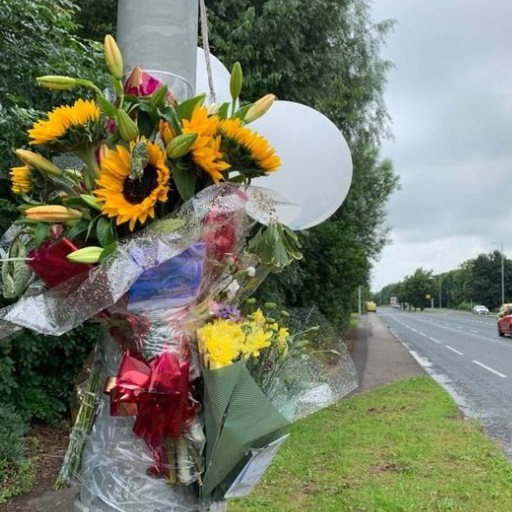Understanding Ukrainian Memorial Services
Memorial services are an important part of many cultures, offering a way to honor the dead and support the living. In Ukraine, these traditions run deep, shaped by Orthodox Christian beliefs, folk customs, and a strong sense of community. Ukrainian funeral rites are not just about mourning; they are about respect, remembrance, and ensuring that the spirit of the deceased is at peace.
Unlike in some Western cultures where mourning is often private, Ukrainian memorial services are deeply communal. Friends, neighbors, and relatives gather to support the grieving family, sharing prayers, food, and rituals passed down for generations. From the wake to the annual remembrance days, these customs help people find comfort in shared tradition.
By exploring these traditions, we gain insight into how Ukrainians honor their loved ones and keep their memory alive. Understanding these customs allows us to appreciate the deep cultural significance behind each ritual and how it helps families navigate loss and remembrance.
Traditional Ukrainian Funeral Rites
Preparation of the Body
One of the first steps in a Ukrainian funeral is preparing the body of the deceased. Traditionally, close family members or an elder in the community wash and dress the body, a practice that symbolizes purification before the afterlife. The deceased is often clothed in white, a color representing peace and the soul’s journey beyond this world.
The coffin is usually placed in the home of the deceased, where loved ones gather to say their final goodbyes. Candles are lit, and prayers are recited, creating a sacred atmosphere. A small amount of money may be placed in the coffin, symbolizing payment for the journey to the next life.
The Wake (Pohrebalna Vecheria)
The wake is an essential part of Ukrainian funeral customs. Family, friends, and neighbors come together to honor the deceased, share memories, and offer comfort. The wake typically includes religious readings, hymns, and moments of silent reflection.
One of the most symbolic elements of the wake is the funeral meal, known as the pohrebalna vecheria. This meal includes traditional dishes such as koliva (a sweet wheat dish) and bread, both of which represent the cycle of life and resurrection. Offering food to guests is an expression of gratitude and respect for their support during a difficult time.
Procession and Burial
On the day of the funeral, a procession leads the coffin to the cemetery. It is common for mourners to walk behind the coffin, symbolizing their final journey with the deceased. Along the way, hymns are sung, and prayers are spoken, asking for the soul’s peaceful transition.
At the burial site, Orthodox priests perform final prayers, and family members may place flowers or earth into the grave. In some communities, people break bread over the grave, a ritual meant to strengthen the bond between the living and the dead. The ceremony ends with words of remembrance and final goodbyes.
Memorial Days and Mourning Periods
Nine-Day and Forty-Day Commemorations
In Ukrainian tradition, memorial prayers are held on the ninth and fortieth days after death. These dates are significant in Orthodox Christianity, marking key moments in the soul’s journey to the afterlife. Families gather for religious services and meals, continuing to offer prayers for the deceased.
Radonitsa (Ancestor’s Day)
One of the most important annual remembrance days is Radonitsa, a special occasion when families visit cemeteries to honor their ancestors. Held on the second Tuesday after Easter, Radonitsa is not just about mourning but about celebrating the memory of loved ones. Families bring flowers, light candles, and share food at the gravesite, symbolizing ongoing connection and love.
Annual Memorials
In addition to Radonitsa, many Ukrainian families continue to hold annual memorial gatherings, ensuring that their loved ones are never forgotten. These gatherings often include church services, family meals, and moments of reflection.
Ukrainian Memorial Services in Modern Times
While traditional funeral customs remain strong, modern influences are reshaping the way Ukrainians remember their loved ones. Urbanization and busy lifestyles have led to shorter mourning periods, and cremation—once rare due to religious beliefs—is becoming more common.
Recent history has also impacted memorial services. The war in Ukraine has led to large-scale public memorials for fallen soldiers and victims of conflict. These events serve as both acts of mourning and symbols of national resilience, showing how collective grief can unite a country.
Technology has also changed how people remember the deceased. Online memorials, digital tribute pages, and virtual candle-lighting ceremonies allow families to honor their loved ones even when they are far apart. Despite these modern changes, the core of Ukrainian memorial traditions—respect, remembrance, and community—remains unchanged.
The Lasting Importance of Ukrainian Memorial Traditions
Memorial services are not just rituals; they help families and communities navigate loss while keeping cultural traditions alive. Ukrainian funeral customs provide comfort through shared mourning, religious faith, and symbolic acts of remembrance.
By learning about different memorial practices, we gain a deeper appreciation for the ways people around the world honor their loved ones. Whether through a traditional wake, a quiet moment of prayer, or a visit to an ancestor’s grave, these acts remind us that the bonds of love and memory never truly fade.
How do you and your family honor those who have passed? Share your thoughts and experiences to help keep these meaningful traditions alive.


